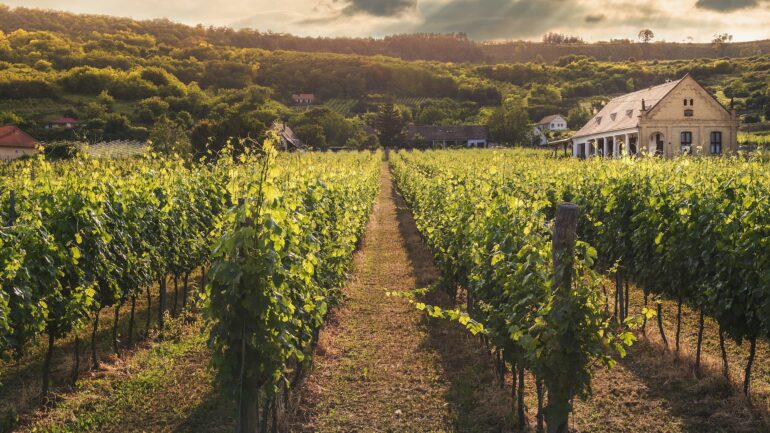A vineyard is a growing space that produces grapes for wine. Its workers apply chemical sprays and fertilizers and check the grapes for problems and pests. Other workers do scientific work determining the chemical composition of grapes and when they are ripe enough for wine.
Site
If you are planning to start a vineyard, you must begin by evaluating the site. You can do this through various methods, such as test pits and soil samples, but you can also ask or inquire about vineyards near Charlottesville. You can also get the soil analyzed by a laboratory. The United States Geological Survey (USGS) is a good resource. They can help you determine the specific impact of different soil types. For sampling soil, digging a deep enough hole to reach the upper 12 inches of soil is advisable. It would be best to take soil samples from depths ranging from 12 to 24 inches. The pieces should be stored in large Ziploc bags labeled with depth.
When choosing the right site for your vineyard, consider the type of soil and climate in the area. In addition to the kind of soil and climate, you should also consider the slope, aspect, and elevation of the land. In addition, it is essential to consider the history of viticulture in the area.
Soil
The soil that makes a vineyard is primarily influenced by the type of climate it experiences. For example, vineyards with sandy soil will tend to produce softer wines with lower tannin and acidity in warm temperatures. Conversely, cooler climates will typically benefit from vineyards with limestone soil. These soils are ideal for growing vines, as they are low in pH and have a high amount of calcium carbonate.
The type of soil you grow grapes in is crucial, as it affects the ripening of grapes. The correct earth will also control the water and nutrients your vines receive. For example, poor drainage can cause excessive waterlogging in a vineyard, which inhibits vine growth and contributes to chlorosis in lime soils.
Sunlight
Sunlight is essential for producing the best wines, but it is not the only thing that makes a vineyard a great place to grow grapes. Different regions experience different climatic conditions, and the amount of sunlight on a specific slope can significantly affect how the grapes develop. For instance, a vineyard that faces east will receive more direct sunlight during the morning, which will help the vines grow. But on the other hand, a vineyard that faces west will receive a lot of harsh sunlight during the afternoon, which can stress the vines and produce a sour taste in the fruit.
The type of sunlight a vineyard receives is a significant factor in the quality of the fruit. A vineyard will not produce high-quality grapes if it gets too much heat. The optimal temperature range for grape production is between 30 and 50 degrees latitude. The closer a vineyard is to the equator, the warmer the climate will be. Sometimes a vineyard will need some cooling influences to keep the temperature in check. Still, it’s essential to consider sunlight and temperature as major deciding factors in where to grow grapes.
Orientation
The orientation of a vineyard is critical to the growth of grapes. It determines which part of the vineyard receives the most and least amount of solar radiation. For example, rows oriented north-south will intercept less sunlight during the afternoon, while rows oriented east-west will receive more sunlight and allow air to circulate between the vines. As a result, north-south rows produce slightly higher yields than east-west rows. However, a vineyard’s row orientation should be coordinated with the site’s constraints. For example, a sloped site can affect the direction of rows.
The slope of a vineyard can affect airflow through the canopy and soil drainage. It can also affect the amount of water retained in the soil and the possibility of erosion. It may also affect how easy it is to work amongst the vines, harvest grapes, and manage equipment. Generally, a vineyard should have a 5% slope or less. However, a more than 15% slope in some regions can be problematic.
Soil pH
The best way to grow grapes and grapevines is to have the correct pH balance in the soil. This can be achieved by adding mycorrhizae (a naturally occurring microorganism that feeds on plant roots) powder to the soil. It is also essential to avoid chemical soil sterilants, which can damage the soil’s microbiology.
pH levels can vary by region. The ideal pH range is 6.5. Using pH-testing equipment to measure soil pH is recommended.
Climate
The climate of a vineyard is an essential factor for vineyard management. Therefore, accurate climate data are crucial for accurately predicting phenological development. Despite the difficulties and costs involved in installing on-site climate sensors, spatially interpolated climate data have been used to conduct viticultural climate analysis. However, it is essential to note that interpolated climate data are not always accurate.
The climate of a vineyard is highly dependent on its location and topography. This includes its aspect, slope, and elevation. Therefore, a vineyard site must be selected carefully to make the most of it. It must have favorable microclimates and be compatible with the grape varieties it will grow. The management team must also decide how to space the rows and trellis of the vines.





